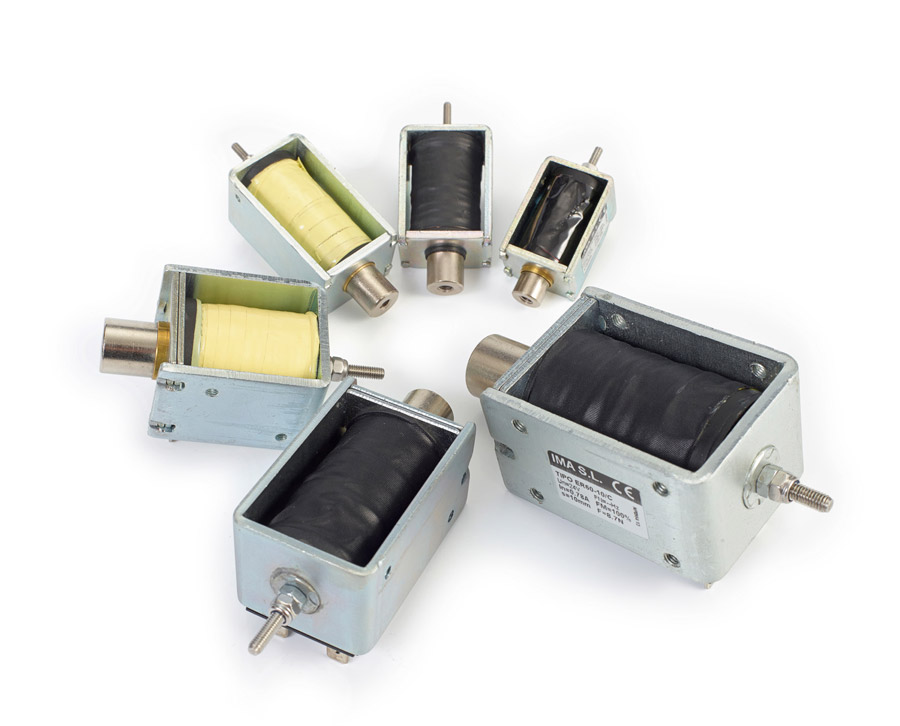
Applications of electromagnets to the industrial sector
Electromagnets were created with the aim of testing, measuring and recreating electromagnetic fields, as electromagnetism is one of the fundamental forces of the universe, responsible for everything from electric and magnetic fields to light.
Electromagnets are devices that use electric current to induce a magnetic field. And, since their initial invention as a scientific instrument, electromagnets have become a common feature of electronic devices and industrial processes.

Electromagnets are distinguished from permanent magnets because they only show a magnetic attraction to other metallic objects when a current passes through them. This has numerous advantages, as the power of their magnetic attraction can be controlled, and turned on and off at will. It is for this reason that they are widely used in research and industry, wherever magnetic interactions are required.
Types of electromagnets
There are three basic types of electromagnets: the robust ones, the superconductors and finally the hybrids.
Resistant: A resistive magnet produces a magnetic field with copper wires, this executes electricity through the wire and electrons produce a weak magnetic field. In this sense, if a wire is twisted around a piece of metal such as iron, it helps to concentrate that magnetic field around the plate, so the more the wire twists, the stronger the field.
Superconductors: Superconducting electromagnets operate by reducing electrical resistance: when a current passes through a copper plate, atoms in the copper interfere with electrons in the current. Therefore, superconducting magnets use liquid nitrogen or liquid helium to produce very cold temperatures. The cold keeps the copper atoms out of the way, and these electromagnets keep working, even when the power is disconnected.
Hybrid: Hybrid electromagnets combine resistive electromagnets with superconductors. The design of hybrid electromagnets varies, but, for example, at the University of Florida there is one that weighs 35 tons, represents more than 20 feet in height, and contains enough copper wire for an average of 80 homes. Deionized water, or water without an electrical charge, keeps this hybrid magnet running along more than 200 degrees C below freezing point.
Uses of electromagnets in industry
Today there are countless applications for electromagnets, ranging from large-scale industrial machinery to small-scale electronic components.
Due to their ability to generate very powerful magnetic fields, low resistance and high efficiency, superconducting electromagnets are often found in scientific and medical equipment. These include magnetic resonance imaging (MRI) machines in hospitals and scientific instruments such as nuclear magnetic resonance (NMR) spectrometers, mass spectrometers and also particle accelerators.
Electromagnets are also widely used when it comes to musical equipment. These include loudspeakers, headphones, electric bells, and magnetic recording and data storage equipment, such as tape recorders. The multimedia and entertainment industry relies on electromagnets to create devices and components, such as VCRs and hard drives.
Electric actuators, which are motors responsible for converting electrical energy into a mechanical torque, also rely on electromagnets. Electromagnetic induction is also the medium through which power transformers operate, which are responsible for increasing or decreasing alternating current voltages along power lines.
Induction heating, which is used for cooking, manufacturing, and medical treatment, is also based on electromagnets, which convert electrical current into thermal energy. Electromagnets are also used for industrial applications, such as magnetic elevators that use magnetic attraction to lift heavy objects or magnetic separators that are responsible for classifying ferromagnetic metals from scrap.
They are also used in the application of Maglev type trains. In addition to using electromagnetic force to allow a train to levitate over a track, superconducting electromagnets are also responsible for accelerating trains at high speeds.
In short, the uses of electromagnets are virtually unlimited, driving everything from consumer devices and heavy equipment to mass transit.Electromagnets have become a common feature of electronic devices and in-line processes.